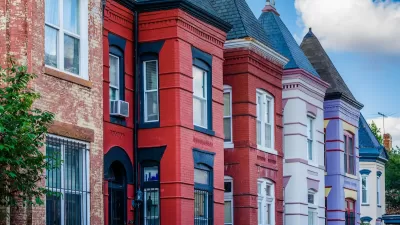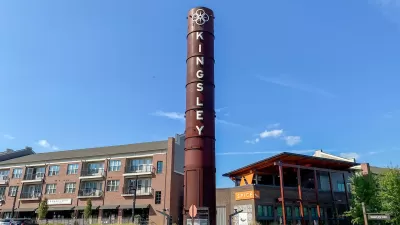Richard Florida takes a look at a new report that traces the affordability crisis to cities' inability to densify their older, inner suburbs.

We hear a lot about how restrictive land use regulations and the efforts of NIMBYs hold back new housing in central areas. But according to Richard Florida, density advocates may want to widen their focus.
Parsing a report by urban housing economist Issi Romem, Florida writes that many urban cores are developing and densifying. "Romem argues that America's real housing problem—and a big part of the solution to it—lie in closer-in single-family-home neighborhoods that were built up during the great suburban boom of the last century, and that have seen little or no new housing construction since they were initially developed."
Using Los Angeles as a case study, Romem goes through how American cities became seas of single-family housing. Florida argues that easing restrictive zoning rules in inner suburbs "would spread population growth more equitably and sustainably across a metro, relieving the pressure of rising housing prices and gentrification around the urban core, and unsustainable growth at the periphery."
"'The dormant suburban sea is so vast that if the taboo on densification there were broken,' Romem writes, 'even modest gradual redevelopment—tearing down one single-family home at a time and replacing it with a duplex or a small apartment building—could grow the housing stock immensely.'"
FULL STORY: Density's Next Frontier: The Suburbs

Planetizen Federal Action Tracker
A weekly monitor of how Trump’s orders and actions are impacting planners and planning in America.

Maui's Vacation Rental Debate Turns Ugly
Verbal attacks, misinformation campaigns and fistfights plague a high-stakes debate to convert thousands of vacation rentals into long-term housing.

Restaurant Patios Were a Pandemic Win — Why Were They so Hard to Keep?
Social distancing requirements and changes in travel patterns prompted cities to pilot new uses for street and sidewalk space. Then it got complicated.

In California Battle of Housing vs. Environment, Housing Just Won
A new state law significantly limits the power of CEQA, an environmental review law that served as a powerful tool for blocking new development.

Boulder Eliminates Parking Minimums Citywide
Officials estimate the cost of building a single underground parking space at up to $100,000.

Orange County, Florida Adopts Largest US “Sprawl Repair” Code
The ‘Orange Code’ seeks to rectify decades of sprawl-inducing, car-oriented development.
Urban Design for Planners 1: Software Tools
This six-course series explores essential urban design concepts using open source software and equips planners with the tools they need to participate fully in the urban design process.
Planning for Universal Design
Learn the tools for implementing Universal Design in planning regulations.
Heyer Gruel & Associates PA
JM Goldson LLC
Custer County Colorado
City of Camden Redevelopment Agency
City of Astoria
Transportation Research & Education Center (TREC) at Portland State University
Jefferson Parish Government
Camden Redevelopment Agency
City of Claremont





























